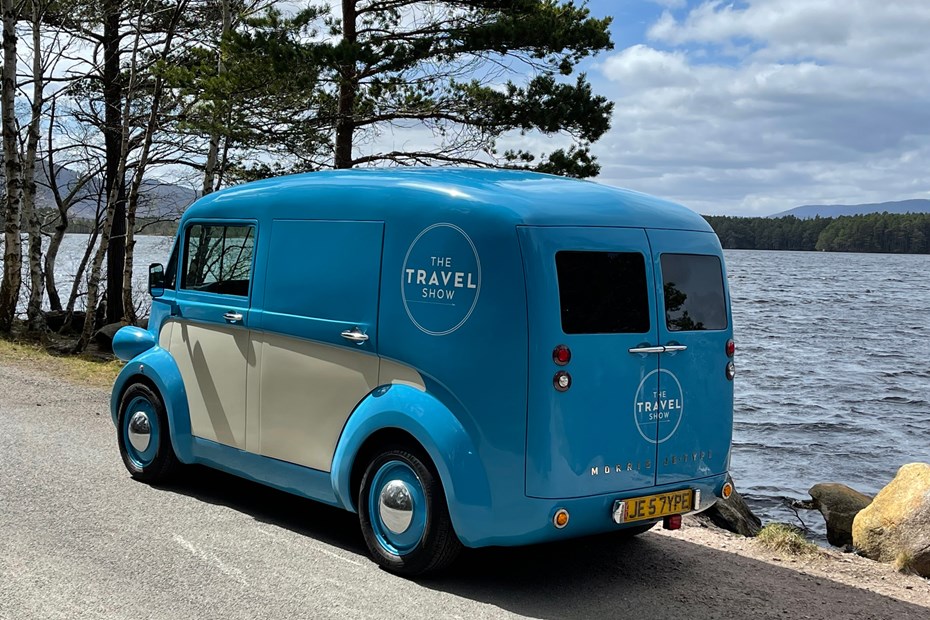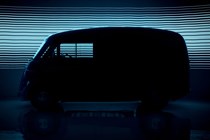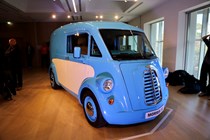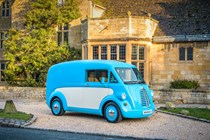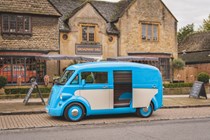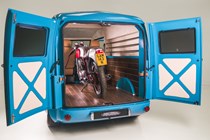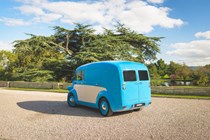Things have all been a bit quiet around the Morris Commercial JE, but this could be set to change after the company behind the new retro-style electric van managed to secure funding to take a notable step towards production.
The Morris JE electric van was first announced in 2019, with the company predicting an on-sale date of 2021, but this came and went with little in the way of updates. Things have taken a positive step, though, with the announcement that a new funding round has been completed, bringing in £8m of new investment courtesy of new and existing shareholders.
The latest injection of cash will go towards increased research and development for the van, engineering validation and certification. Finally, it will see it head into production in 2024, says Morris, with orders starting at the end of 2023.
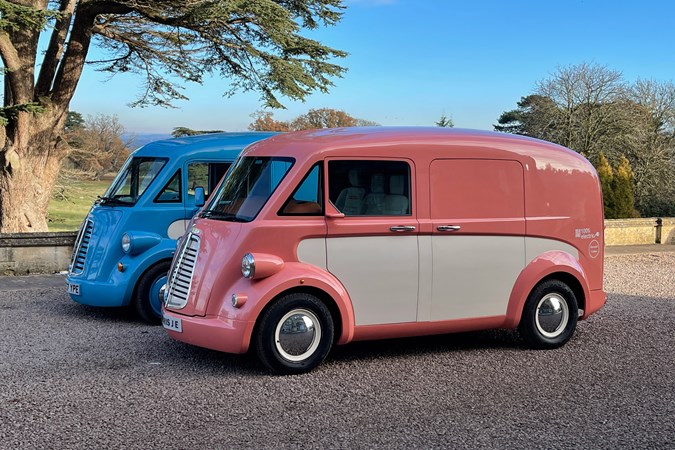
Despite a turbulent financial market in the last few years, the asking price remains unchanged for now. The new JE van will start at £60,000, with more information on specification and other costs due towards the end of 2023. It has said that it will be eligible for the government plug-in van grant. As Morris is aiming for a targeted gross vehicle weight of just over 2,500kg it should qualify for the maximum £5,000 grant.
So far, all Morris has is ‘thousands of expressions of interest’ but this will change when it starts taking refundable deposits later in 2023. It says it has interest from all over the world, but pointed to Europe, Australia and New Zealand as potential markets once things get up and running.
Thanks to its cutting edge materials – including an all-carbonfibre body – it should be capable of a dramatically reduced weight. Morris says it should offer a kerbweight of just 1,500kg, which means a payload of 1,000kg.
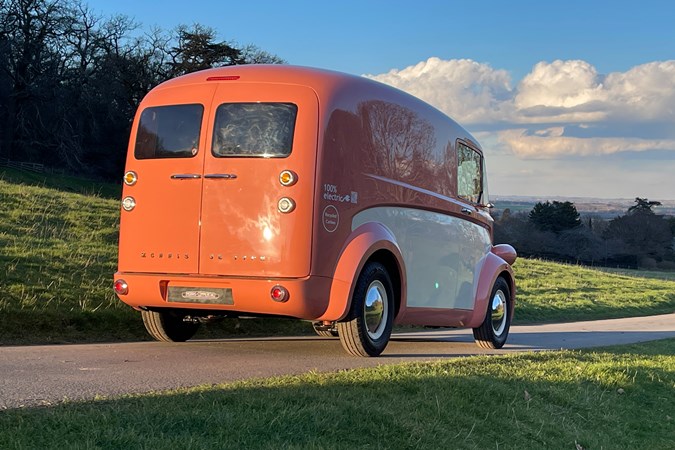
It is – of course – also an electric van. Designed and engineered right here in the UK, it’s targeting businesses and private buyers who want an eco-friendly solution with difference.
Any by golly, if you want to make your business stand out – it’s certainly eye opening.
Keep reading for what we know about the Morris JE electric van so far.
The return of the long-standing Morris Commercial name?
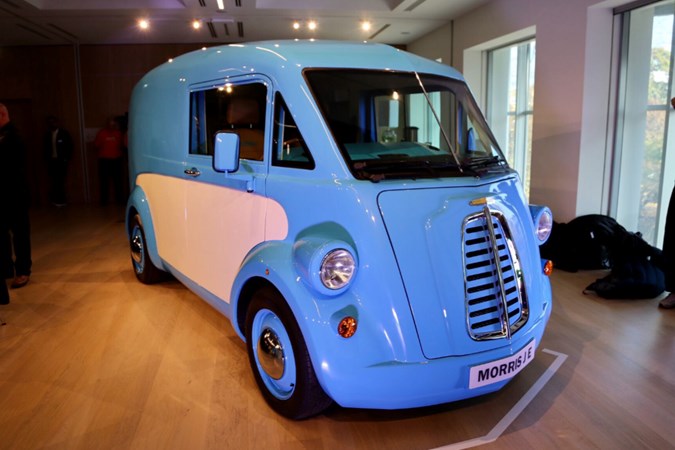
Ah. Yes. When we said it was new, what we actually meant was that a ‘UK-based management team’ has acquired the rights to the old Morris Commercial name and resurrected it to build what they are hoping will become a family of electric vans inspired by models from Morris Commercial’s past.
So the JE is a modern J-Type?
Exactly right. The original J-Type was unveiled all the way back in 1948, launched in 1949 and on the market until 1961; its distinctive design has earned it iconic status in some quarters.

And to be fair, even if you’ve never heard the name you may well recognise the shape – it’s a kind of British equivalent to the Citroen H-van in those terms, and was noted in its day for having impressively generous load volume for its size.
The new JE certainly hasn’t been shy about stealing many of the original’s most recognisable features, including the prominent wheel arches and front lighting pods.
The firm says ‘the new vehicle is not a replica of a 70 year old design, but it takes the DNA and values of the original van and brings it up to date.’
Main differences? Well, the front doors are no longer sliding (but the side ones are), the cab is bigger, and of course, it isn’t powered by a 1476 cc petrol engine either.
Principal designer, David Obendorfer, told Parkers: ‘It’s important to be respectful of the history of this iconic design.’
Any details about the electric driving range yet?
Yep. Morris reckons 250 miles to a virtual tank, although it hasn’t been through the WLTP cycle yet. This would give it a range that is second only to that other retro-styled van, the VW ID.Buzz Cargo.
There will be three different batteries to choose from, with a 40kWh, 60kWh and an 80kWh version on offer, with the biggest of these naturally responsible for the 250-mile range. This is calculated, as per WLTP requirements, with a 50% payload on board and Morris is confident it will be able to go further in reality.
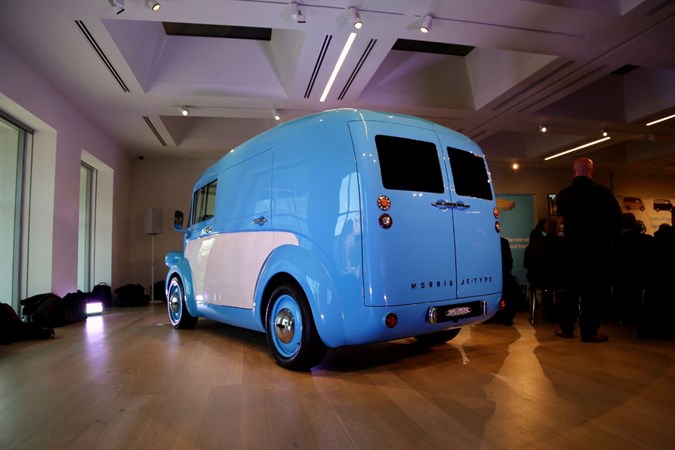
Bold claims, as developing electric vehicles presents substantial challenges to even the most well-established engineering firms – consider the recent collapse of the Dyson electric car project, for example.
Regardless, we’re pretty sure the electric motor drive will provide far better performance than the old 1.5-litre engine of the original.
Is it really going to have a carbonfibre body?
Morris Commercial promises so. Composites technical director, Nick Smith, has previously explained that carbonfibre looks expensive, but it can be cost effective for projects of this size (1,000 units a year for now). ‘While carbonfibre is more expensive than aluminium, using an economy of scale brings with it big savings. Carbonfibre is costly to make, but you use less of it. And there are well-established ways of doing it in bulk, like seen the aeronautical industry.’
The choice of carbonfibre is a big deal for several reasons.

It is an extremely high-end material, usually only reserved for supercars (though the advanced BMW i3 electric car also makes extensive use of it).
It brings potentially massive weight advantages because it is very light and very strong – which will help counteract the weight penalty involved in using batteries instead of a fuel tank in an electric van.
Thanks to this, Morris says the JE has one of the best power-to-weight ratios of any light commercial vehicle, which is good news for performance and driving range.
For example, 0-62mph should come up in 10-12 seconds, although it hasn’t been tested laden or unladen yet.
But carbonfibre is also more difficult to work with than traditional metals and it’s more complex and costly to repair, too. Making the decision to use it on a van a particularly interesting one.
Does the Morris Commercial JE really exist?
It does. We’ve seen it in the carbonfibre. The project has been on the go since 2017, and there is now a second engineering prototype to sit alongside the one that was first seen in 2019.
It looks good too. It doesn’t have the lovely metal bumpers of the old van, but it looks retro and kitsch without being cloying.
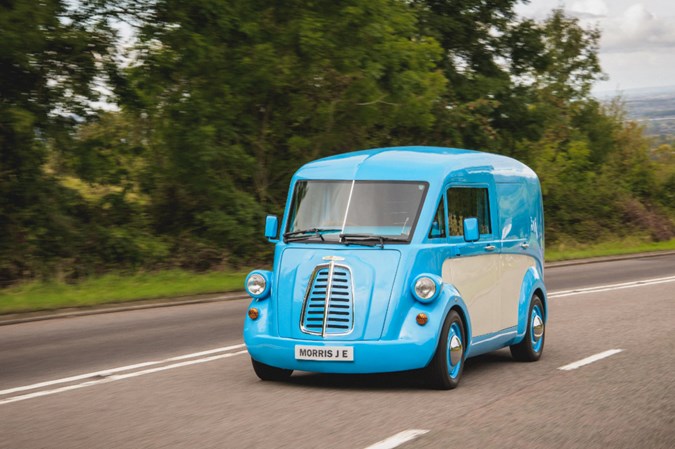
Nevertheless, it takes more than one prototype to create a brand new range of vans, let alone cutting-edge electric ones. We’re intrigued but a touch cynical about its chances of success at this stage.
As of 2023, Morris is still talking about a £60,000 starting price, but this will be for the smallest of the three batteries so expect to be able to pay a lot more.
When it comes to servicing, Morris says that it is in talks with a com
Who’s behind the new Morris Commercial?
CEO and founder is Dr Qu Li, who has previously been involved MG Rover and LDV. The firm is based in Worcester, and has what’s described as a ‘highly experienced team of established automotive designers and engineers.’
The latest round of funding came courtesy of Capital for Colleagues – an investment firm. This brought £1m of investment, while existing backers Bill Ainscough – a non-executive director at Morris – and TJ Morris Ltd each put in a further £3.5m. The investments will come in three phases of 50%, 25% and 25%, with all the money set to go in by the end of 2023.
This represents a comparatively small outlay compared to the rounds of funding that Arrival has needed. Morris says that it aims to keep everything at a relatively small scale. That said, the team is aiming for 1,000 vans in its first year, with most of those targeted at the UK market.
What does the Morris JE interior look like?
OK, the interior on the pre-production model is disappointing for a £60,000 van. The pre-production model looked like a work in progress. The biggest disappointment was the drive selector and manual handbrake. Both look to be lifted straight off an LDV.
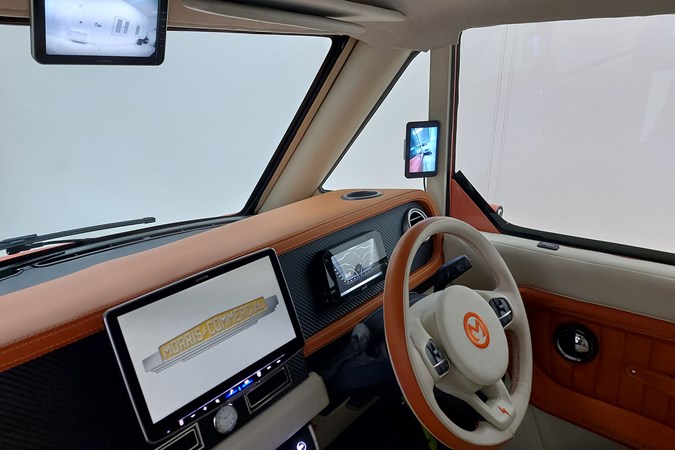
The leather seats looked decidedly second-rate too, and felt a bit plasticy. Upfront, the touchscreen looked highly unitegrated.
To be fair, this is a pre-production van. And Morris Commercial promises finished models will be a much more premium proposition.
No word yet as to whether the sliding front windows will remain in production models…
What about the Morris JE’s practicality?
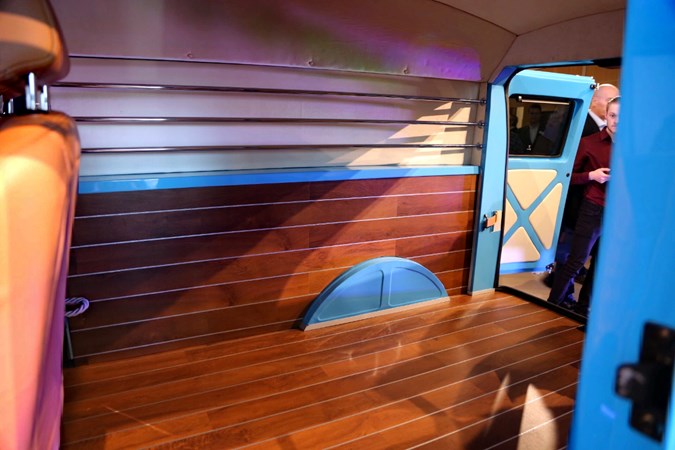
Rear cargo space is 5.5 cubic metres – up from 4.2 of the original J-Type. Payload is 1000kg, and from what we’ve seen, it seems a bit bit more finished than the interior.
That space should fit two standard sized Euro pallets in the back. The wood looks good too, but we can’t help but feel that they should put a bit more wood up front.
Technical bits?
Go on then. The factory is set to be in Worcestershire, England, where the headquarters are at the moment. The time per build is also up in the air at the moment because Morris Commercial hasn’t sorted out the supply chain yet.
It’ll be front-wheel-drive too. And it hasn’t been Euro NCAP tested yet.
- Battery: 40kWh, 60kWh and 80kWh
- Range: up to 250 miles
- Charge time: 80% in 30 minutes via rapid charger
- Payload: 1,000kg
- Price: £60,000 (TBC)
Morris Commercial JE Pickup and Minibus
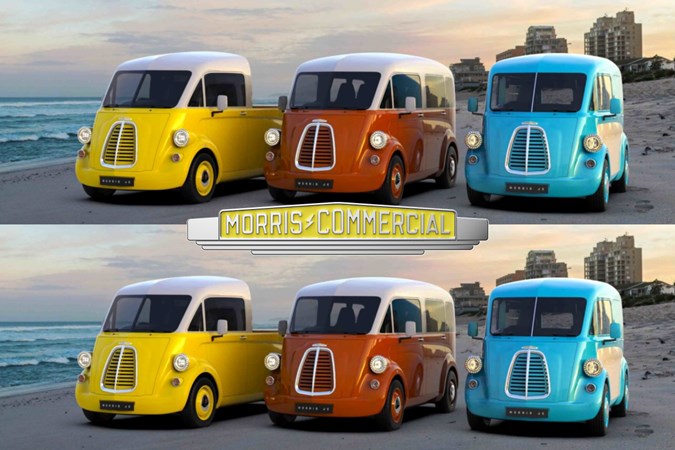
Details are pretty sparse, but Morris Commercial has promised both pickup and minibus variations. We’ve seen renderings and they look adorable. They will run the same modular chassis and powertrain as the van. Plus they’ll be available in the same pastel hues.
Dr Qu Li told us that these variations are far along in the design process, but more details about them won’t be released until first deliveries of the standard van are completed. Expect more info towards late 2020.
Just so you know, we may receive a commission or other compensation from the links on this website - read why you should trust us.


